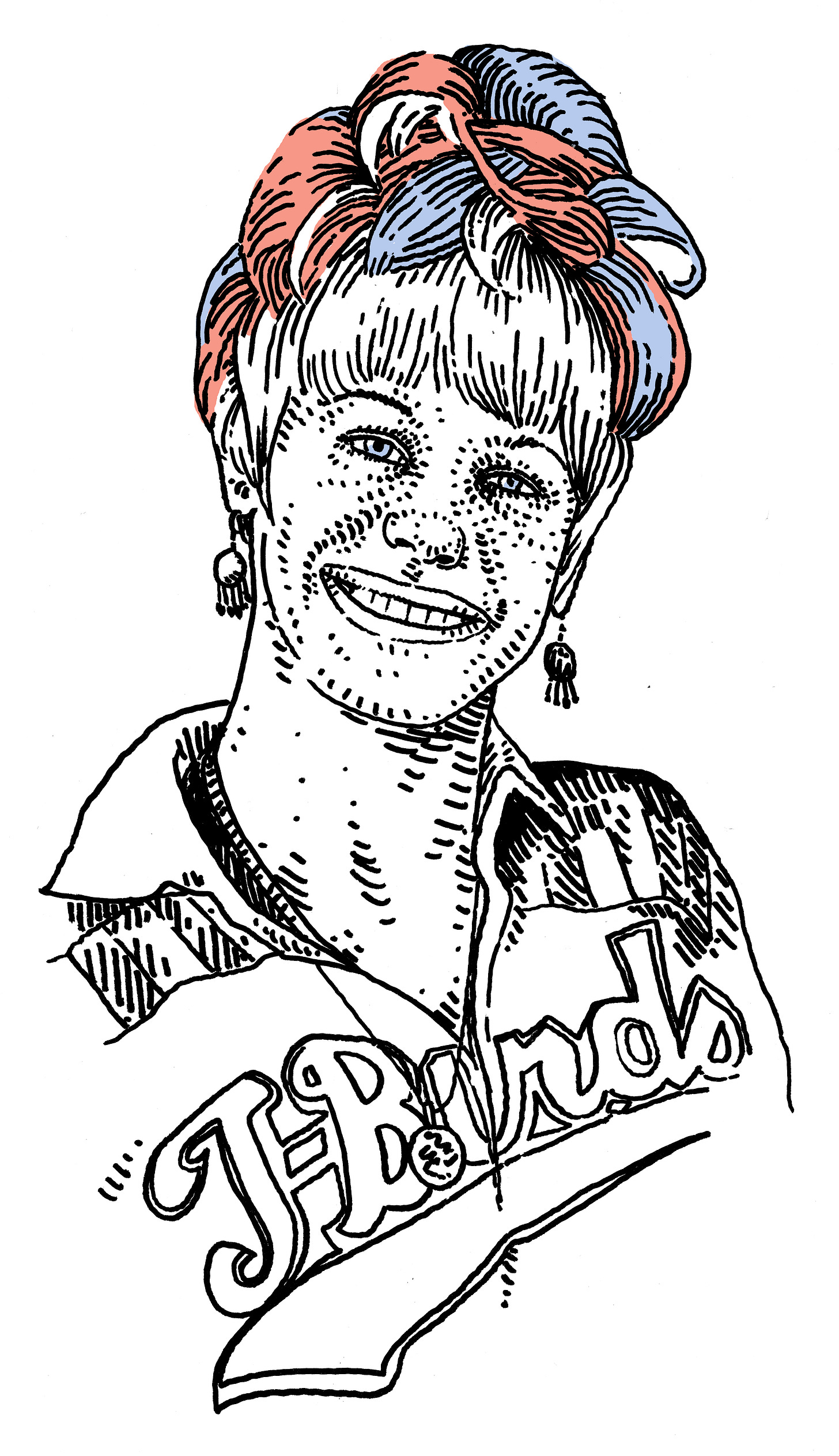Hi. Welcome to Sports Stories, an illustrated newsletter at the intersection of sports and history.
If you’re not already a subscriber, please consider joining up here — we have both free and paid options. If you enjoy Sports Stories, please share it with your friends. Word of mouth is our best (and only) means of publicity.
You can also buy some merch, including shirts, hats, zines, and postcards, at our very cool web store.
One of the many things I like about writing Sports Stories is that every week is a chance to push this project a little further, do something slightly different, meet readers in a new place. But one of the other things I like is coming across an athlete who embodies our peculiar, ephemeral Sports Stories spirit. In that regard, I don’t think you could do better than Ann Calvello.
Ann Calvello was a true original; an unhinged and yet self-possessed entertainer from the fringes of sport in America; a missionary traveling in time from our carnival past. She was the greatest roller derby skater to ever do it. She lived to be hated, to be screamed at, and mostly to be seen. Nobody skated like her, nobody talked like her, and sure as hell nobody looked like her.
“She was punk before there was punk,” said Jim Greene, who skated with Calvello in the 1950s and 60s.
Calvello was born in 1929 in Newport, Rhode Island but her family was always moving. They ended up in San Francisco. Her father was in the Navy and almost never around. At one point, as a teenager, Calvello saw him hit her mother. She vowed to never speak to him again. This was a promise she kept.
The first time Calvello saw roller derby, she was 18 years old. She signed up to try it, and for the next fifty years, she never stopped. As the sport grew more and more popular in the 1950s and 60s, Calvello became one of its biggest stars. In particular, she became its greatest villain. She was hilarious on the microphone and extremely flamboyant: constantly dying her hair in outrageous patterns, adorning her uniforms with as much color and bling as she could find.She would tell people that she was Dennis Rodman before Dennis Rodman; that Joe Namath was the Ann Calvello of football.
Roller derby was and is a brutal and physical sport. Calvello thrived. She overcame regular broken noses, threw punches with the best of them, and skated with both grace and desperation.
“All my injuries, I never went to get stitches,” she told Frank DeFord writing for Sports Illustrated. “Just let it heal itself. The scar right here was open this wide. I never got stitches or anything. Why should I worry? What can help this face? I got my nose cracked once and went to the doctor, and they put all that stuff in it, cotton and everything, so the next time I got it cracked I didn't bother.”
The stories from her time in roller derby read like mythology. During winters on the road, she used to maintain her tan with the heat lamps in the Holiday Inn bathrooms. She referred to her breasts as “tickets” and would yell out “tickets up, stomachs in” before she took to the track. She traveled with her own large silver chalice -- and when she walked into a bar, she would set it down and instruct the room to keep it full all night. The room always did. She drove a Lincoln with a vanity license plate that said L-O-V-E-R.
Calvello gave roller derby everything. In the 1950s, she retired briefly from the sport after getting married. When her husband hit her, she left him immediately. She also left her young daughter behind with her mother-in-law to get back on the road. She was the kind of star every promoter dreams of, capable in the way that very few performers are, of making her audience feel. In exchange for this, roller derby took Calvello around the country and around the world. It gave her massive audiences at ballparks and football stadiums. It gave her a sense of purpose. But it did not not give her enough.
Roller derby was always on the edge of the mainstream. In 1973, the sport’s biggest promotion, International Roller Derby went out of business, leaving Calvello and her colleagues professionally stranded. What does a roller skater do to make a living when there is no more roller derby league?
Calvello latched on to the various startup leagues that formed in the decades to come. She worked nine-to-five at a Safeway near her home, and sold tickets to 49ers games. She kept skating as long as she possibly could, all the way into her 70s. It was impossible to let go of the sport when so much of her identity was wrapped up in it. She died of liver cancer in 2006.
“Love me or hate me, boo me or cheer me, I get what I’ve never gotten anywhere else in my life,” Calvello said in one pre-match interview late in her career. “Which is a sense of appreciation.”
Related Reading
There’s a really nice, low-key documentary about Calvello called Demon of the Derby streaming on Prime. It has lots of great footage from late in her life. YouTube is also full of clips of Calvello in action.
Frank Deford wrote about her in this long feature on roller derby from 1969. It’s full of great detail, but a lot of his one-liners have not aged very well. I got a lot of great stories from a book called “The Last True Roller Derby” by Larry Smith, who was one of Calvello’s colleagues. I also thought the San Francisco Chronicle obituary on Calvello was warmly written and rich with unique anecdotes.




